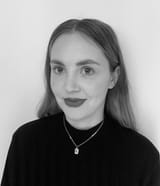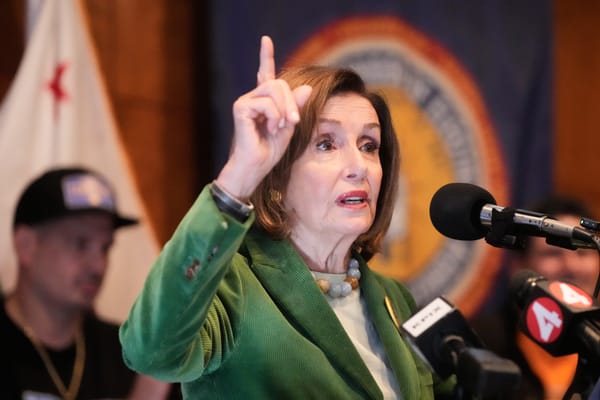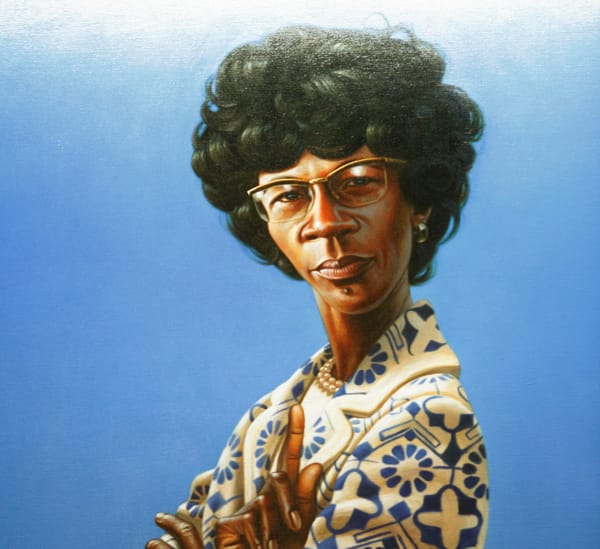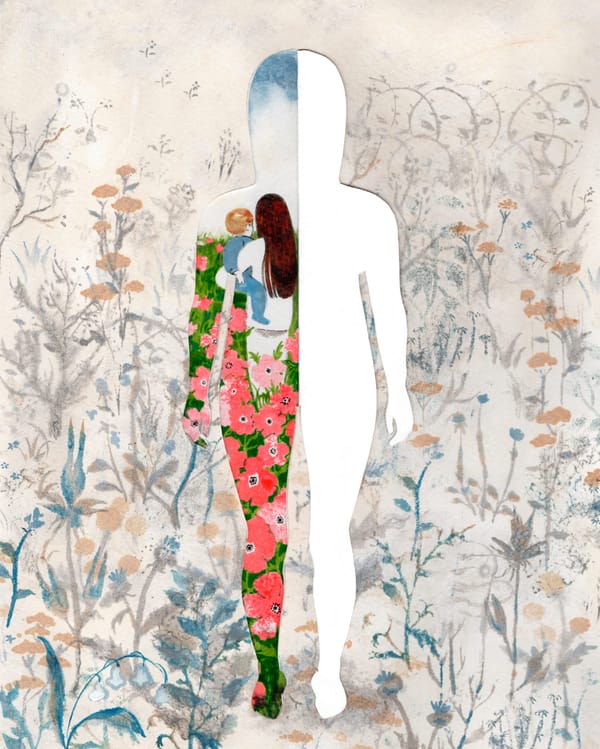This Indigenous Brazilian Woman is Risking Everything to Defend Her Lands (And No, She Won't be at COP)
As world leaders gather in Brazil for this year’s global climate talks, the women on the frontlines of defending the world’s forests and rivers tell us why they won’t be taking part.
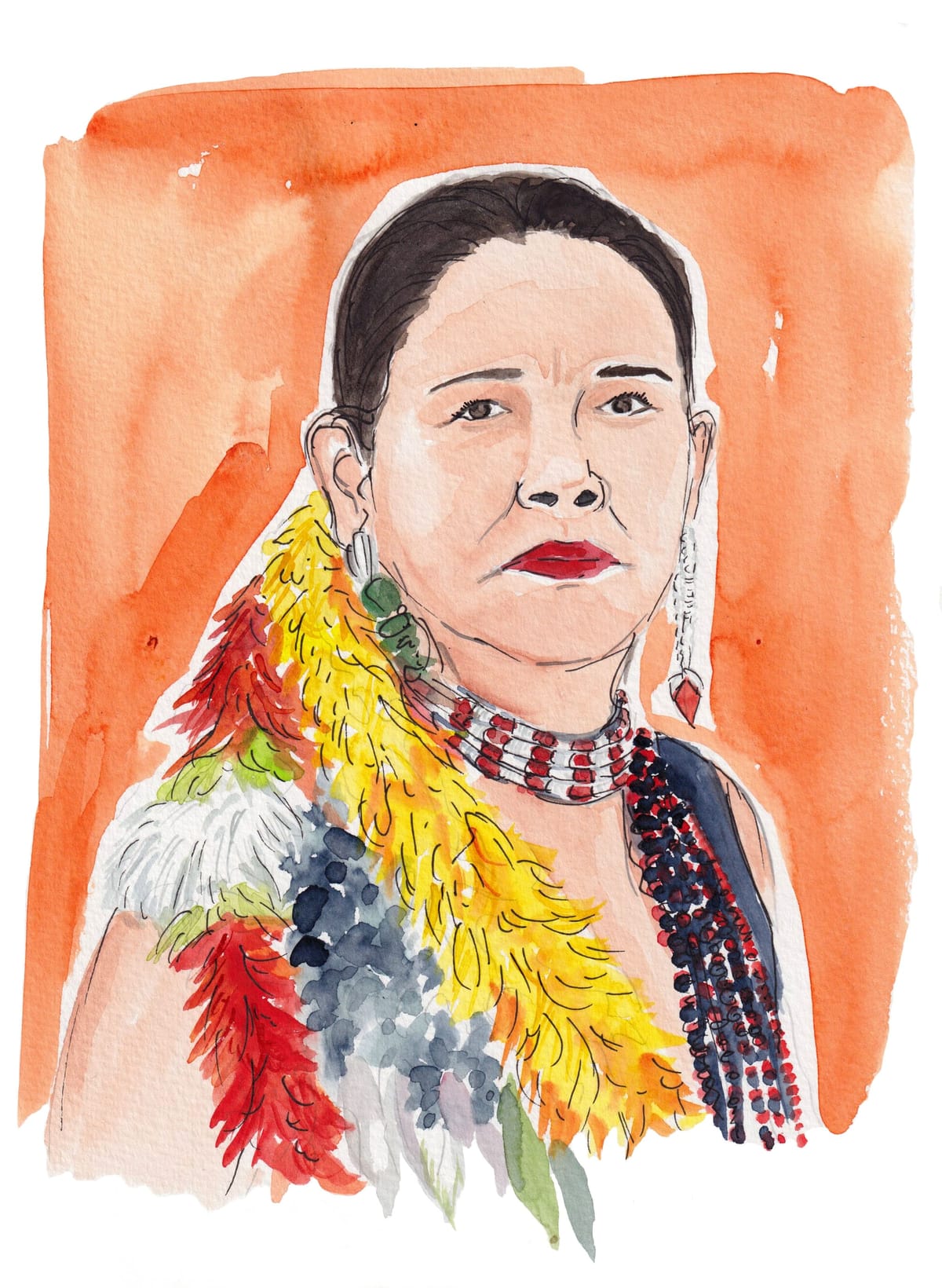
Over the next two weeks, some 50,000 people will pile into the small city of Belém on the edge of Brazil’s Amazon rainforest. Despite concerns around a lack of accommodation and the South American country’s devastating track record on deforestation, the world’s governments are gathering here for this year’s COP, the UN’s annual climate talks, where suited bureaucrats mingle with politicians, diplomats and campaigners from nearly 200 countries.
The aim, at least in theory, is simple: to discuss and update their plans to address climate change. There’s one person, however, who won’t be there: Shirley Djukurnã Krenak, an environmental activist and leader of the Krenak Indigenous people, from the Brazilian state of Minas Gerais. Djukurnã Krenak has dedicated her life to protecting the environment, often at huge personal risk. But she won’t be attending this year’s COP, despite the invitation, in part because she’s busy, in part because she isn’t convinced these COP meetings work.
“If all COPs had been good, I would already have [had] my territory returned to me,” she says, referring to the fact that her community doesn’t have guaranteed rights to some of their traditional land.
Indigenous communities and environmental defenders like Djukurnã Krenak have an intimate knowledge of—and connection to—the natural world. As a result, they should be playing a critical role in shaping global climate action. This is particularly true in Brazil, home to about 65% of the Amazon rainforest, which is vital for absorbing the greenhouse gases that are causing global warming.
Yet it’s these very communities that face significant barriers to participation and are often left out of vital decision-making processes.
Painfully slow progress
Brazil’s president, Luiz Inácio Lula da Silva, has said that the era of “fine speeches” is over; that this year is all about action.
But while Djukurnã Krenak would love for that to be true, the reality is, progress on protecting and healing the climate has been painfully slow. Belém is the 30th COP gathering, but with another year of record heat and extreme weather on the books, the cry that the conference is “no longer fit for purpose” is growing louder.
Too often, say critics, wealthy countries with huge carbon footprints resist emotional calls for change from lower-income countries whose people are most at risk from and least responsible for climate change. The costs to attend also serve to keep out less wealthy countries which can’t afford to send dozens of delegates.
Yes, the 2015 Paris agreement, in which nearly every country on earth committed to the goal of limiting global warming to 1.5 degrees Celsius, was huge. But 10 years on, the U.N. secretary general António Guterres has said that failing to keep within the target limit is “inevitable.”
Then there’s the fact the U.S. has quit the Paris agreement twice, despite being the world’s second-largest emitter of greenhouse gases. (China holds the first place for that dubious award, and India, third; a complete list here.) President Trump won’t be flying into Brazil this week, though U.S. state and local leaders will attend. Nor will leaders from China or India.
Fighting for justice
On Nov. 5, 2015, about a month before the historic Paris agreement, Djukurnã Krenak watched as a mining dam collapsed in Minas Gerais and a torrent of toxic sludge swept down into the Doce River, killing 19 people and wiping out villages. It was one of Brazil’s worst environmental disasters on record, and it destroyed her people’s land. She has been fighting for justice ever since. The mine is owned by Samarco, a joint venture between Vale, a Brazilian mining company and BHP, an Anglo-Australian company. Although Brazil's courts cleared all three of criminal charges last year, they have paid millions in compensation since 2015 to affected communities.
For the Krenak Indigenous people who lived (and still live) on the water’s banks, the river isn’t just a river—it’s sacred. “We used to say that the river is our father,” Djukurnã Krenak explains. Now, the community can no longer fish there because the water is contaminated with mercury. As a result, they’re buying more processed foods. Obesity has become a problem, Djukurnã Krenak explains, as have diseases like diabetes and hypertension, along with depression and anxiety.For years, Djukurnã Krenak and others in her community have demonstrated against Vale, including blocking access to the company’s private railroad that runs through their land and suing them on multiple occasions, she says. Last year, Vale and BHP signed a deal with the Brazilian government to pay nearly $30 billion in compensation over the dam collapse.
A win, sure, but the river is still dead, points out Djukurnã Krenak.
She calls it “one of the most serious ecocide crimes on the planet.”
A matter of life or death
This year, Brazil’s minister of Indigenous peoples, Sonia Guajajara, is introducing several measures to ensure that Indigenous voices are at the center of COP30, including the Peoples’ Circle which aims to ensure Indigenous people's voices are heard at this year’s COP. But others say that their representation is still not adequate.
And then there’s the reality that doing this work can put Djukurnã Krenak—and others like her—in serious danger. Brazil is the second most dangerous country in the world for environmental defenders. People like Djukurnã Krenak, who risk their lives to protect their land, territories and communities from environmental and climate harms face criminalization, threats of violence and worse.
In 2023, at least 196 climate defenders were murdered across the world, according to Global Witness, an international NGO. The majority of these cases were in Latin America, with nearly half targeting Indigenous people. There were 25 killings in Brazil. Women, in particular, face gender-specific challenges and are often targeted not only for their work but for defying gender norms, too.
When I ask Djukurnã Krenak how often she receives threats, she laughs wearily. “Every day,” she says, though she won’t go into detail for safety reasons. “[And] sexism is 24 hours a day.
Neidinha Suruí, a Brazilian Indigenous rights activist and environmentalist who has spent decades fighting to protect the Amazon, has “lost count” of the threatening anonymous phone calls she has received. Armed men have broken into her house and pointed weapons at her daughter. Now, she and her family live behind an electric fence.
Olivia Bisa, the first female president of the Chapra Nation, an Indigenous group in the Peruvian Amazon, says that the threats are so extreme, she has taken to wearing a bulletproof vest when travelling through certain territories.
“Either these women become heroes…” says Laura Rico, campaigns director at Avaaz, a U.S.-based nonprofit organization, or, as she starkly puts it, “they might just fry.”
“They hold so much and it is unbearable,” she says.
Some days, the danger gets to Djukurnã Krenak. “It’s so bad,” she says. “Sometimes I feel I’m alone.”
And still, Djukurnã Krenak and other activists keep on, pressing to get their community’s territories recognized and protected, a process known as “demarcating” the land. This would help shield them from industries including mining and oil drilling.
Research shows that when Indigenous peoples hold secure land rights, their territories have lower rates of deforestation, have reduced greenhouse gas emissions and show better biodiversity protection compared with areas managed by governments or private entities. Since taking office in 2023, Brazil’s President Lula has recognized 13 Indigenous lands across the country—his predecessor, Jair Bolsonaro, recognized none—out of over 100 lands.
It’s enough to get to anyone, but to cope, Djukurnã Krenak puts on a metaphorical shield: She draws from the women of her family—her grandmother and great grandmother who died years ago—and feels stronger, she says. It works so well, she even has space to think about the world beyond her community.
“We will fight for everybody on the planet because we believe it is possible to have a new planet,” she smiles. “A new world.”
Translation by Gregório Oliveira

